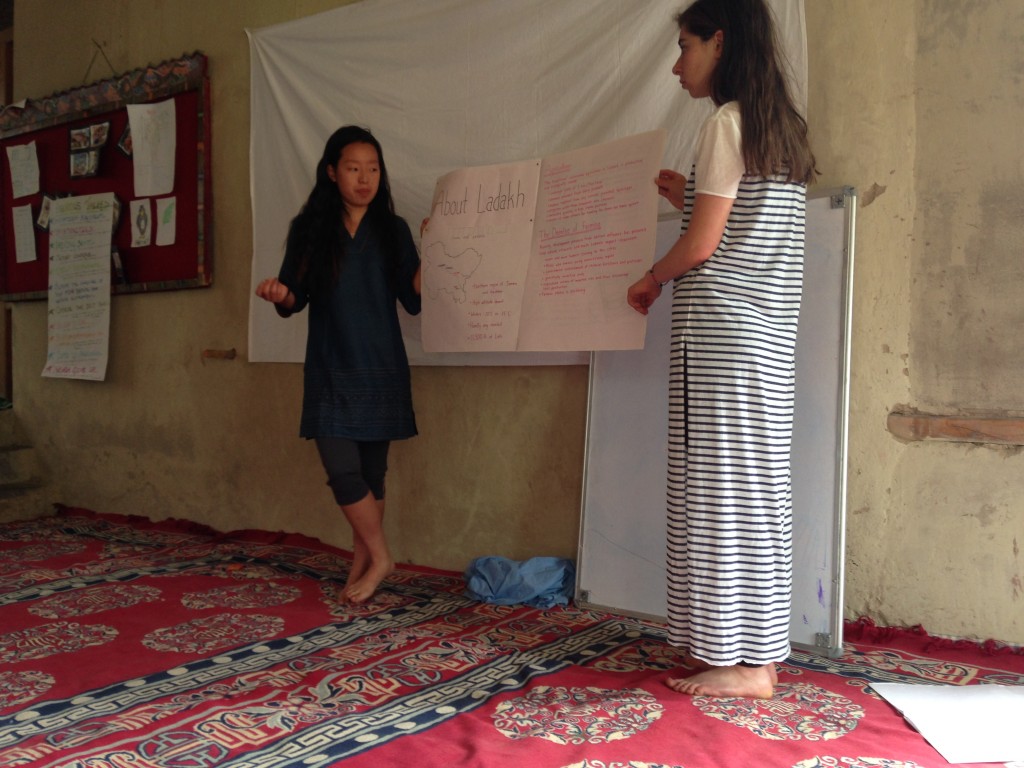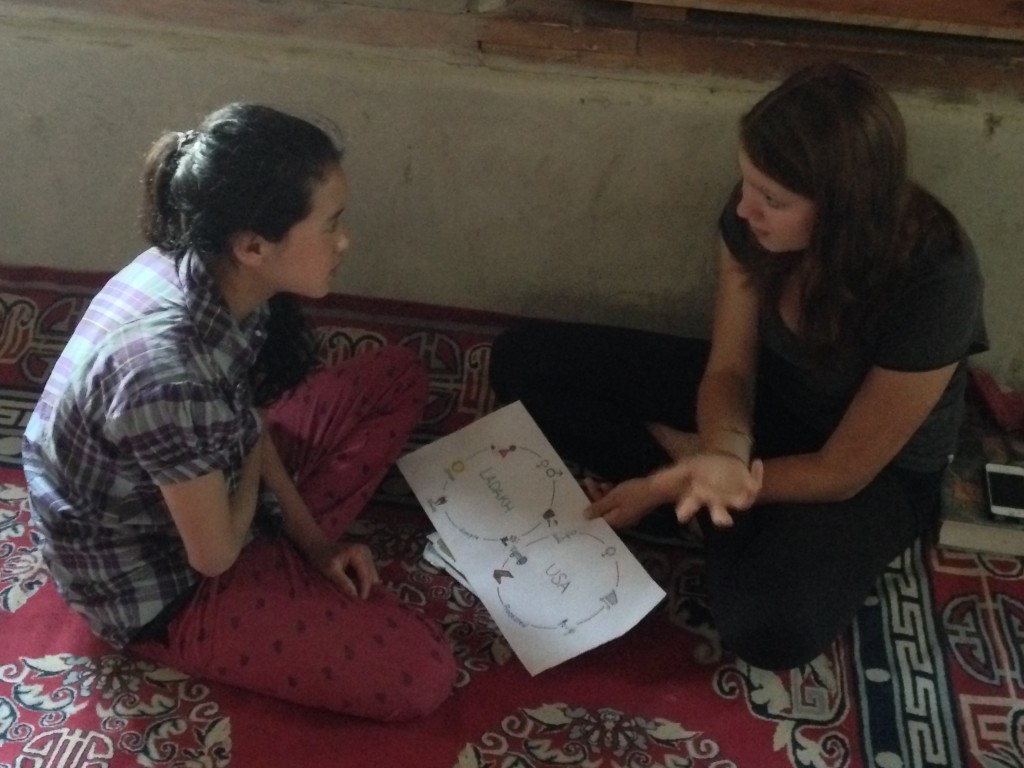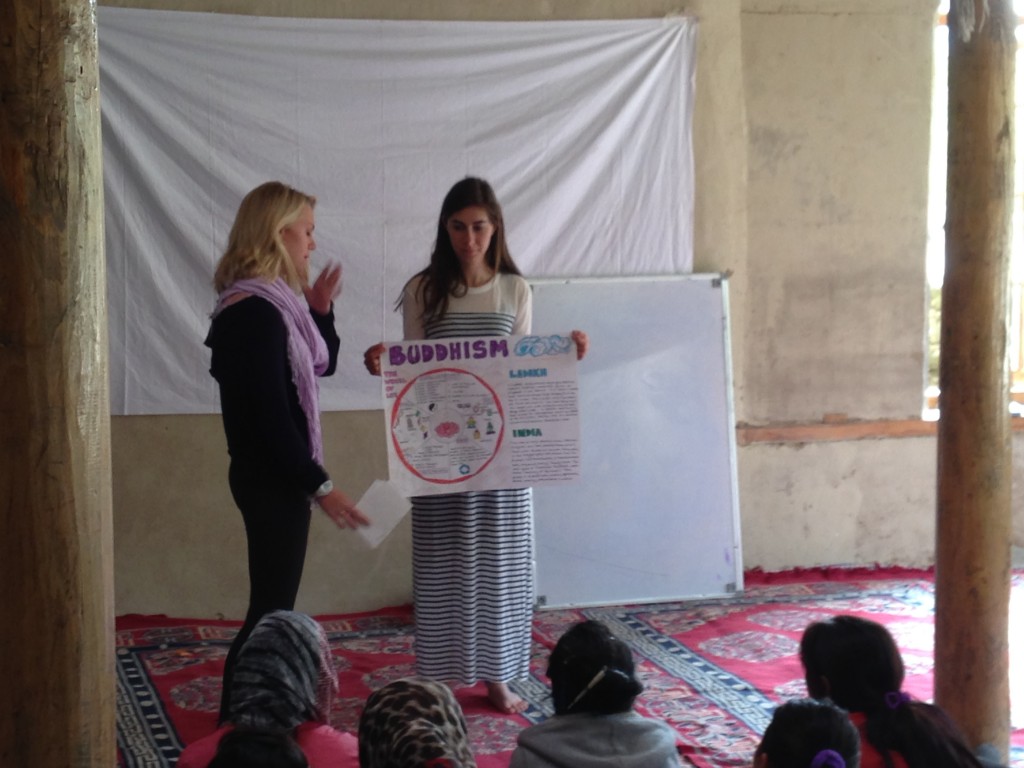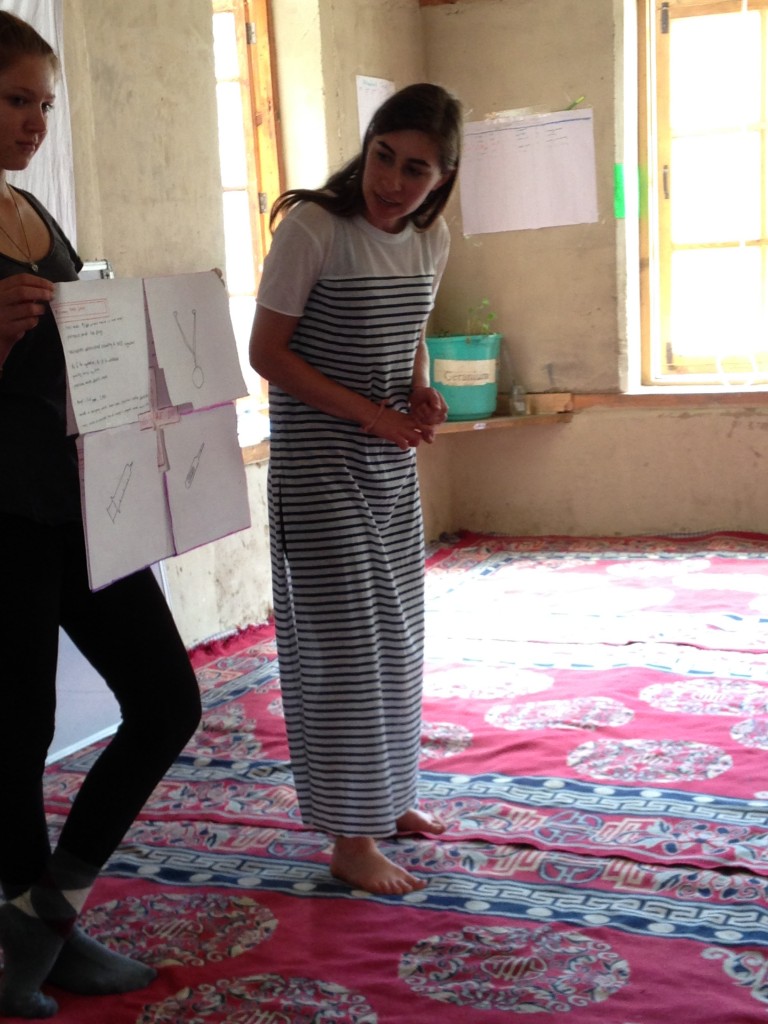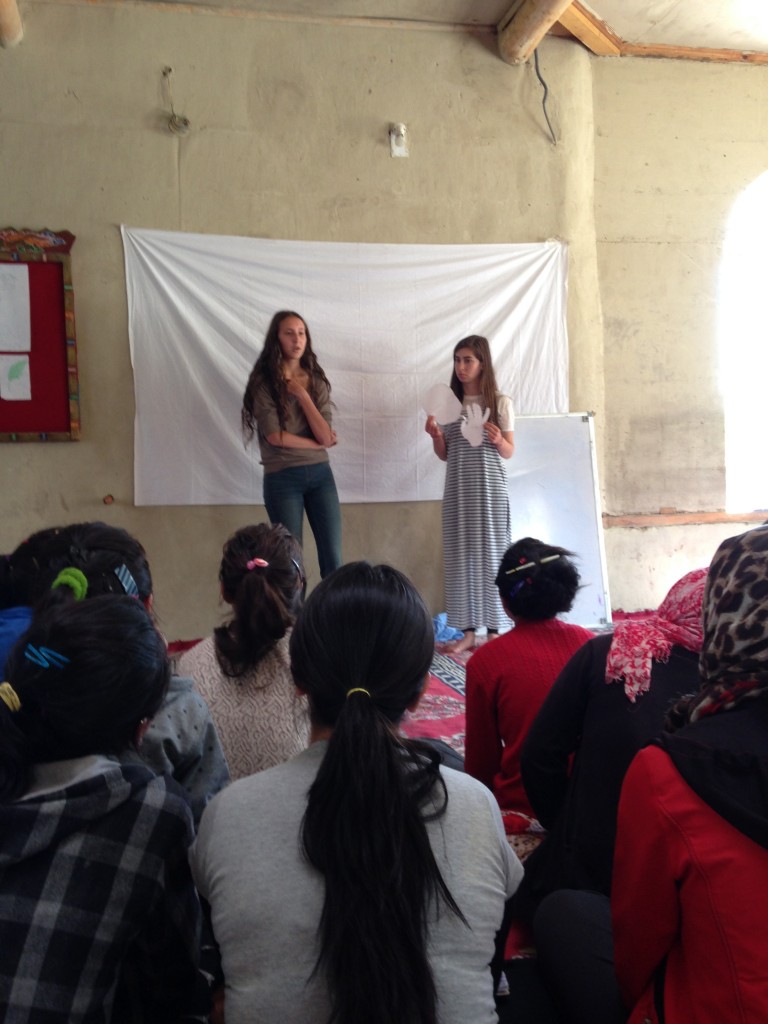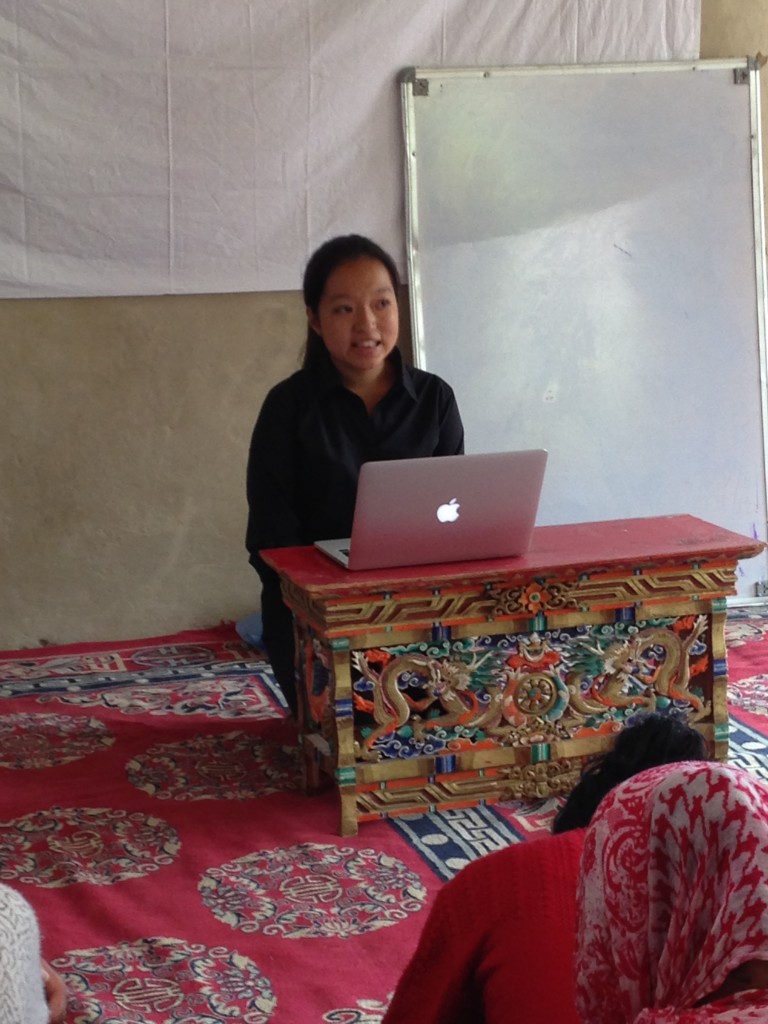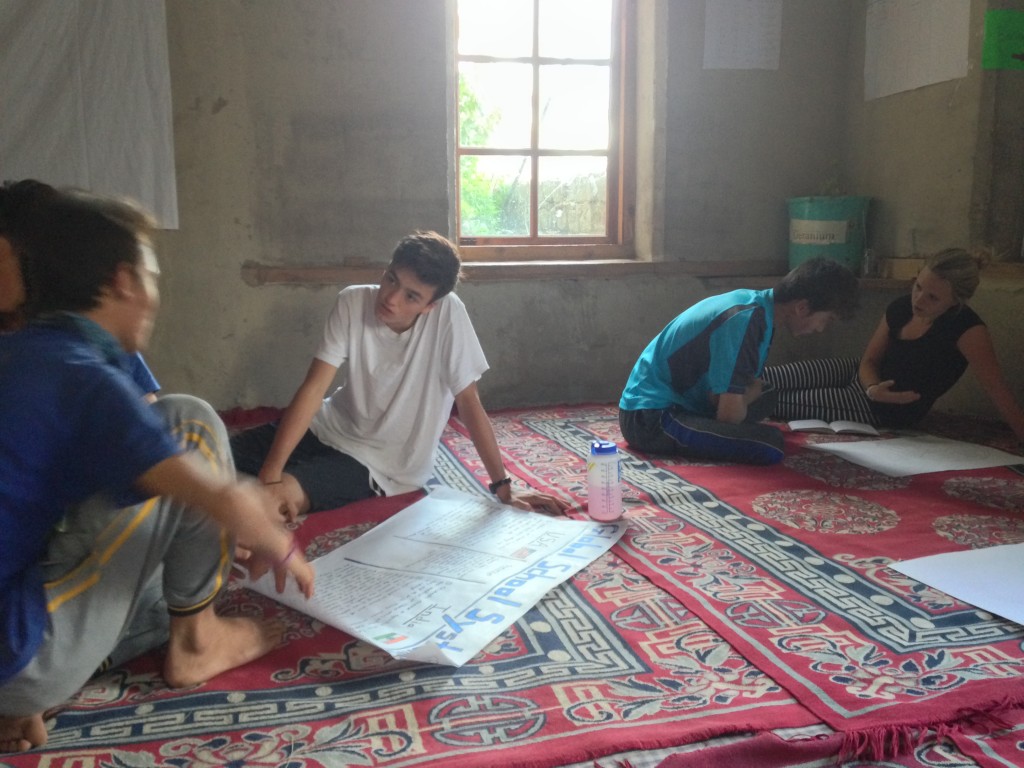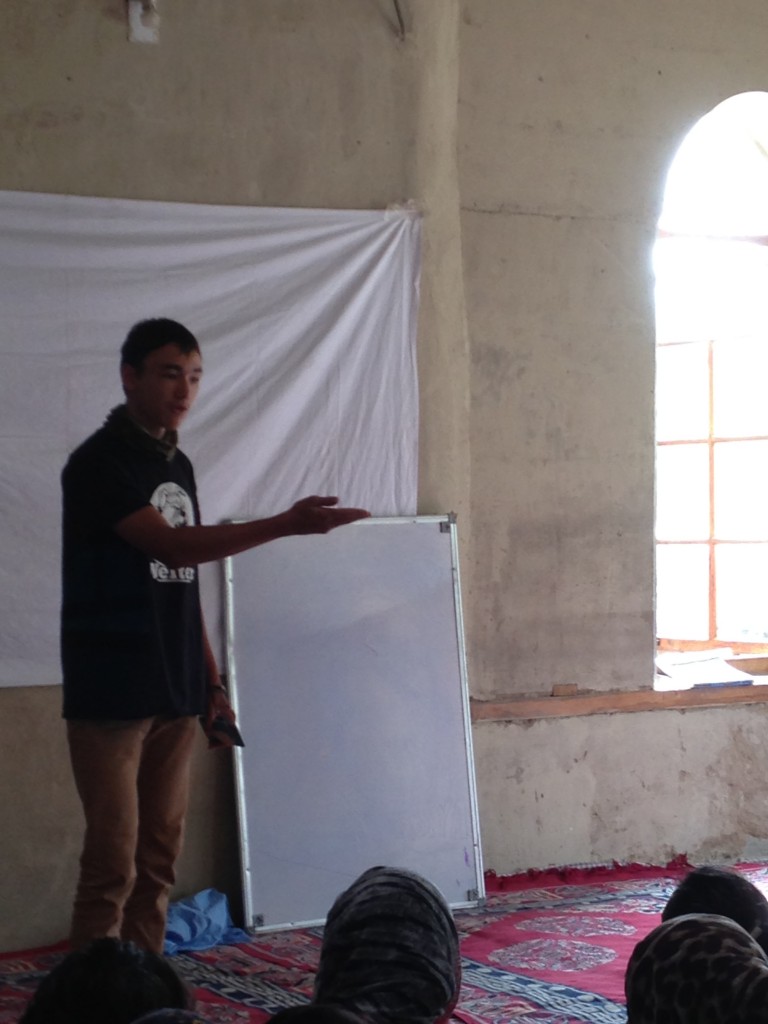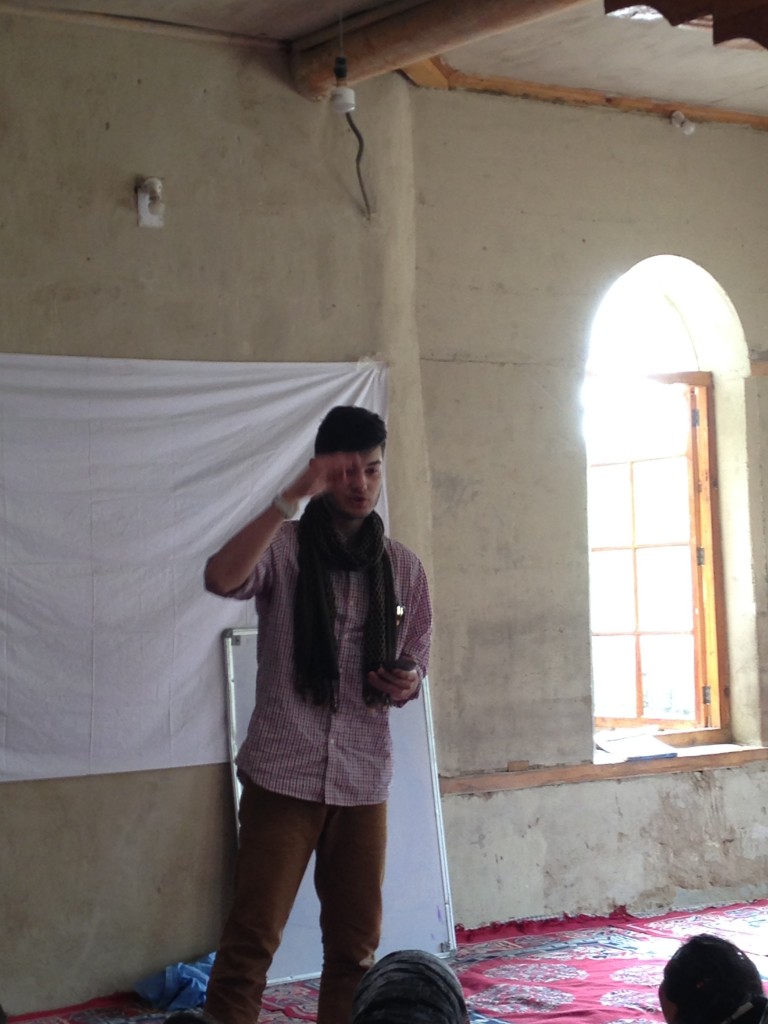While in Ladakh, students prepared independent projects and explored specific issues they were exposed to in Ladakh more deeply. In our final days at SECMOL, they presented the product of their research to the group and to SECMOL students and staff. All presentations were very well received and generated a great deal of discussion from the Ladakhi community! Below, each student describes their project:
Tara G: I focused on methods of sustainability I observed both in SECMOL and in the villages we visited on our hike, with a particular focus on green architecture. I picked this topic because I believe that sustainability and tradition go hand-in-hand in Ladakh, which is significant in a rapidly changing material world. I presented my topic as a mini-book with separate sections on each form of architecture and design.
Amey H: I studied the culture of mealtime. While in my homestay, I was amazed with how involved the family was with the process of “farm to table.” I wanted a chance to compare that model to the typical American family and see the differences. I was very surprised by the issues of public health and gender that surfaced!
Catherine M: I did my project on the fundamentals of Buddhism, comparing how it is practiced in Ladakh vs. India. I presented a poster with an updated “wheel of life,” which showed the basics of Buddhism in a more relatable way, and then on the side, I compared Ladakh and other Buddhist regions in India. The project offered a great way to take something concrete away from the trip. I got most of my information from monasteries that we visited throughout the month.
Magdalena R: The project that Maddie and I did focused on the generational changes in the Ladakhi population and the impact of tourists/foreigners since 1974 (the year in which the region became “open” to foreign visitors). We tried to expose the negative, positive, and controversial issues that are currently relevant here.
Maddie H: I focused on the re-opening of Ladakh to the outside world. I used information from the novel, Ancient Futures, as well as conducted primary research from interviews and through participation in meetings with NGOs. Magda and I highlighted medical, environmental, cultural, and lifestyle changes, and we discussed positive and negative effects — and effects which may be both — and proposed solutions for the future.
Téa L: My project explored how healthcare is delivered in Ladakh on a local (village-based) level. I also looked at the problems faced by the government in providing a national healthcare system and the potential structural issues in India’s healthcare system. Finally, I researched which epidemics and diseases have created the biggest public health issues in India.
Sarah B: My project was most heavily based on interviews that I conducted with locals in villages and at SECMOL. I compared the conditions of people with physical and mentail disabilities living in Ladakh verses those in the United States.
Tina L: My independent project focused on the relationship between China and Tibet. Having been raised in a very politically conservative environment, I found my interviews with all the Ladakhis and Tibetans living in Ladakh to be very eye-opening. I also learned a lot during the whole process. Hopefully I can explore a little bit more on this topic after I return home to Beijing.
Ellis L: I chose to focus on the education systems in place in the United States and in India. I looked for ways in which the systems are similar and for differences that exist. I researched both public and private schools in the two countries. I learned a lot about the experiences of many Indian students and gained perspective on how my own education has been unique.
While most students used a visual format to present their research, two students presented written work. That text is shown below.
James B: My project focused on how Tibetan folklore and Buddhism related to each other. As my work progressed, I added a comparison between Buddhist and Christian origin stories as well. I told a creation story which, in my view, was like a Buddhist “Garden of Eden.” I then reflected on the morals from the story, the truths that were universal, and the lessons of each that were similar — they were all ideas that don’t need to be followed because they pertain to religion, but rather because all humans are affected by them.
I’m going to discuss Tibetan mythology and Buddhism. Many of the connections between the two are because the folklore evolved side-by-side with Buddhism. Many of the stories are strongly influenced by Buddhism. I’m going to tell the story of how humans became human:
When humanity came into existence, we all had enlightenment. We were all gods. Infinite beings meditating in contentment. But one day, humanity began to eat the cream of the mountains. It was sweet and delicious. We stopped meditating and were no longer content. Slowly we lost the powers of gods and became human. Greed entered the world. Eventually, we ran out of the cream of the mountains and began to eat a fruit from a plant. This plant would regrow everyday and there was not enough food for everyone. But one man took more than his one fruit. And then there was never enough food. Starvation entered the world. People were forced to steal to eat. Dishonesty entered the world. The world began to overpopulate as women entered the world. The world was in total darkness. The sun, moon, and stars appeared as a last remnant of our good karma as gods. That was how the world was created.
This story reminded me of the Biblical story of the garden of Eden. One bad action brought sin into this world. In Buddhism, evil begets evil. This idea can be seen in the story. One bad thought led to one bad action, which led to all bad in the world. Just as the eightfold path can save a person, so can it destroy us. What the story taught me was just how important right thoughts are. Even if I’m not a Buddhist and don’t necessarily believe in enlightenment, there are still many universal truths that this story teaches me. Negative thoughts lead to negative results, while positive thoughts lead to positive results.
Questions for discussion.
3. Do you believe that there are universal truths?
Dzenan C: My project analyzed how geopolitical issues surrounding India affect Ladakh. Ladakh is an interesting region of the world that is struggling with internal problems, like sustainability and the encroachment of foreigners, and external problems, like border tensions with Pakistan and China. I decided to present my project using slam poetry, which I thought would resonate more with our Ladakhi counterparts. (If you’re not familiar with slam poetry, see here for more information: http://www.poets.org/poetsorg/text/brief-guide-slam-poetry)
Stay True, Ladakh
A region that’s used to in betweens,
In between the mountains,
the rivers,
The borders,
The struggles,
From the Congress to the BJPs
The Gandhis to the Modis
J and K to the LHC
Ladakh,
Finds itself between India and the Pakistanis
Here flies the Orange white and green
A land of the Buddhists, Muslims, and Sikhs
Where the army roams free,
and villages are one with the trees,
Ladakh,
So much to do in Leh,
Where the word of the day is: Jullay
And where you may,
See a Shan in the day,
Ladakh,
Stuck between the tanks and the AKs
Now I won’t bore you with Geo Political issues,
That’s something I’ll let the men in suits do,
I’m just here to give my advice,
To see Ladakh reach new heights,
Stay True to what you do,
From thukpa, to momos to rice,
Ladakh is a wonderful place,
All it needs is to be cautious of the global race,
To become new, to modernize
Because those who are wise,
Will know that the Secmol kitchen is not complete without flies,
But in all seriousness,
Ladakh finds itself in a serious situation,
With tourists and modernization,
Trash and globalization,
Fear and military mobilization,
However there is a solution,
And it begins with me and you,
From the mountains grey and the lakes blue,
There is one thing to do,
Ladakh,
Stay True.
